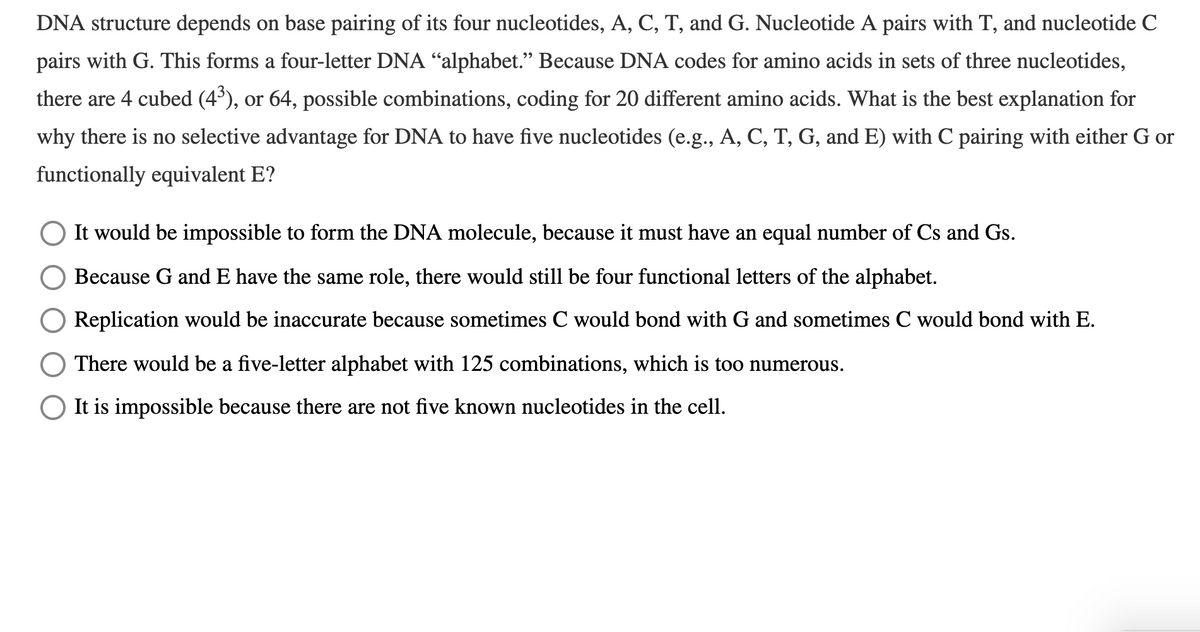DNA structure depends on base pairing of its four nucleotides, A, C, T, and G. Nucleotide A pairs with T, and nucleotide C pairs with G. This forms a four-letter DNA “alphabet." Because DNA codes for amino acids in sets of three nucleotides, there are 4 cubed (4³), or 64, possible combinations, coding for 20 different amino acids. What is the best explanation for why there is no selective advantage for DNA to have five nucleotides (e.g., A, C, T, G, and E) with C pairing with either G or functionally equivalent E? It would be impossible to form the DNA molecule, because it must have an equal number of Cs and Gs. Because G and E have the same role, there would still be four functional letters of the alphabet. Replication would be inaccurate because sometimes C would bond with G and sometimes C would bond with E. There would be a five-letter alphabet with 125 combinations, which is too numerous. It is impossible because there are not five known nucleotides in the cell.
Nucleotides
It is an organic molecule made up of three basic components- a nitrogenous base, phosphate,and pentose sugar. The nucleotides are important for metabolic reactions andthe formation of DNA (deoxyribonucleic acid) and RNA (ribonucleic acid).
Nucleic Acids
Nucleic acids are essential biomolecules present in prokaryotic and eukaryotic cells and viruses. They carry the genetic information for the synthesis of proteins and cellular replication. The nucleic acids are of two types: deoxyribonucleic acid (DNA) and ribonucleic acid (RNA). The structure of all proteins and ultimately every biomolecule and cellular component is a product of information encoded in the sequence of nucleic acids. Parts of a DNA molecule containing the information needed to synthesize a protein or an RNA are genes. Nucleic acids can store and transmit genetic information from one generation to the next, fundamental to any life form.

Trending now
This is a popular solution!
Step by step
Solved in 2 steps


